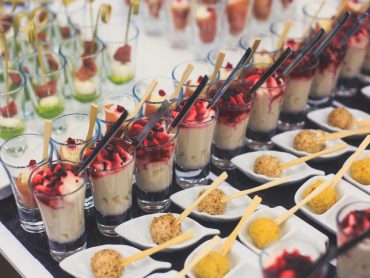In Vino Veritas: Part IV – Dessert Wines
I’m quite privileged to live in Toronto, which happens to be just over an hour’s drive from Niagara-on-the-Lake, one of only a few well-known, wine-producing regions in Canada. Although not nearly as prestigious as other APAs in California or France, Niagara is recognized as a world leader when it comes to ice wines – a subcategory of dessert wines where the producers don’t pick the grapes until after the first frost hits the vines.
When I last visited the winemaker Stratus (www.stratuswines.com) in Niagara-on-the-Lake, Ontario for a tasting, I was awed by their use of such sweet wines. No longer just an accompaniment to a chocolate mousse or crème brûlée, their ice wines were served with cheeses. The unbridled sweetness of a Riesling Icewine matched with piquant cheddar. A fruity Vidal Icewine paired with mellow Gouda. The complex red berry tastes of a Cabernet Franc Icewine contrasted perfectly with a sharp, salty Blue Stilton. All exquisite.
What I learned: dessert wines aren’t solely for dessert, nor are they solely for cheeses. What about pairing such sweet wines by the glass with appetizers? Think lobster bisque and Sauternes. On a recent trip to the Fairmont Le Manoir Richelieu (www.fairmont.com/Richelieu) in the Charlevoix region of Quebec, I sampled a sweet apple cider ice wine with foie gras – a surprisingly playful combination.
Dessert wines have a rich history. There is a wide variety, and while Canada is known for its ice wine, many other regions produce their own local gems: German Eiswein and Trockenbeerenauslese, Austrian Ausbruch, French Sauternes and Hungarian Tokaji Aszú to name a few.
The point is that sweet wines are highly underappreciated. Incorporating them into your menu is an excellent opportunity for added F&B revenues.
The key to selling sweet wines outside of their typically defined after-dinner utility is to offer them by the glass. For most of your customers, dessert or sweet wines aren’t nearly as familiar as their red and white cousins. For others, they’re just too sweet to consume inå any significant quantity. Even though bottle sizes are often only 200ml or 375ml, it’s still a hefty commitment, especially given that dessert wines lean towards the expensive side.
Offering sweet wine by the glass eliminates these obstacles. People will be more adventurous with a one-ounce portion – a suggested serving size that’s adequate for a taste and keeps selling prices reasonable while still maintaining margins.
Start by reviewing with your chef and F&B manager what sweet wines you currently stock and how a few common varietals might be matched with your selection of appetizers. Next, consider putting a cheese plate on the menu with suggested pairings. Better yet, how about a flight of dessert wines to give patrons a more formal introduction. Last, educate your staff so they can properly communicate how great these wines actually taste and how well they complement certain foods. Remember, dessert wines aren’t just for dessert anymore!




